Into Practice, a biweekly communication distributed from the Office of the Vice Provost for Advances in Learning to active instructors during the academic year was inspired by a successful 2012 HILT grant project. The e-letter highlights the pedagogical practices of individual faculty members from across Schools and delivers timely, evidence-based teaching advice, contributing to and strengthening a University-wide community of practice around teaching.
Below is a catalog of all the Into Practice issues sorted by the publication date. To subscribe to Into Practice, please sign-up via our Mailing List page.
-
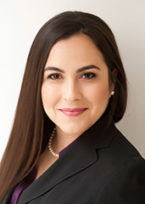
Demonstrating that everyone’s voice is valued
Dr. Monik Jimenez, an Assistant Professor in the Department of Epidemiology, uses different pedagogical approaches to elevate diverse voices and styles of learning. In her Mass Incarceration & Health in the US course, she balances speaking time between a traditional scholar and an impacted community member, and emphasizes to the latter (and to students) that they are an expert. Dr. Jimenez also provides a variety of ways for students to participate and ask questions that include different cultural and neurodivergent learning styles. “It’s important to think about decolonizing the classroom in a layered way,” she reflects. “What are the multiple ways in which systems of power and white supremacy have impacted what we consider to be an ‘optimal’ student through the metrics we’ve been taught?”
-
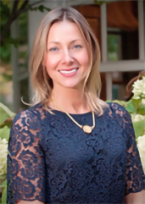
Centering student need in gateway courses to the field
Dr. Carmen Messerlian, Assistant Professor of Environmental Reproductive, Perinatal, and Pediatric Epidemiology, remodeled the department’s gateway Reproductive and Perinatal Epidemiology I course after her first year teaching it. Drawing on key observations and 6-8 hours of one-on-one student meetings per week, “I wanted to understand students’ learning needs and requirements, their goals for the course, and where their training was going to take them.” From there, she synthesized both her own experience in the field and quantitative student review data to radically revise the course’s structure. Now the course helps students develop their scientific research skills, explicitly scaffolding how to perform activities that students rarely get formal training in, like academic journal peer reviews, abstract writing, and poster presentations. At its core, the course trains students “how to become a reproductive epidemiologist,” and to learn how to put on “an epidemiological lens” when they produce, digest, or evaluate material in the field.
-
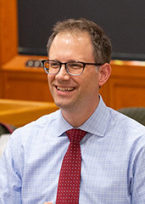
Capturing conversation to build ideas collectively
Ryan Buell, Finnegan Family Associate Professor of Business Administration, leveraged Scribble for his remote course to help students engage with case discussion longitudinally and collectively. The virtual board platform allowed students to engage online in lieu of an in-person experience in which the blackboard operates as a coordinating element for case discussion. “It helps students put the pieces together, allowing them to track any idea shared by the faculty and shared by the students.”
-

The importance of incorporating mentorship into your teaching practice
Dr. Anita Vanka, Assistant Professor of Medicine and Associate Advisor & Director of Hinton Society at Harvard Medical School, co-directs Practice of Medicine with Dr. Katherine Johnston, Assistant Professor of Medicine. The eleven-month course involves several hundred faculty members at different teaching hospitals and is designed to teach first-year medical and dental students how to effectively interview and communicate with patients, perform a thorough physical exam, reason through diagnostic possibilities, and translate findings effectively in both oral and written form. Given the size and breadth of the course, Drs. Vanka and Johnston developed a mentoring system which allows for each student to meet with an assigned faculty advisor at their hospital site several times a year. These meetings encourage faculty to develop personal relationships with the students, oversee their clinical progress, provide feedback, and guide students into setting goals for their learning and progress.
-
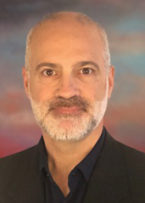
Encouraging learning by creating alongside diverse feedback
Paul B. Bottino, Co-Founder, Executive Director, and Lecturer at the Technology & Entrepreneurship Center at Harvard, offers Start-up R&D to undergraduate students across disciplines who are interested in the field and have a particular project idea in mind. Within the workshop course structure, “each student project is the educational centerpiece.” Student groups work on a variety of innovative startup projects seeking solutions to problems they care about. The course uses multiple approaches to help students build upon their ideas and receive constructive feedback: “challenge sessions” where students outline their biggest obstacles to a small group of peers; individual meetings with Bottino and teaching fellows; and connections with alumni. “It’s like a Greek forum of peers, near-peers, and mentors” with students learning that “entrepreneurship is a creative and iterative research practice of idea formulation, experimentation, and feedback.” At the end of term, students present and receive feedback on projects at a public event “Demo Day.”
-

Enhancing learning through an alternative (and immersive) classroom
Nicole Mills, Senior Preceptor in Romance Languages and Literatures, helps students grasp the French language and experience the culture through “alternative classroom contexts.” Specifically, students participate in virtual reality (VR) experiences alongside the curriculum. During the first week of the semester, students immerse themselves in the daily lives of four different Parisians from the same quarter through a series of 360 VR videos that were self-recorded by the Parisians themselves. They then partner to challenge stereotypes of Parisian culture and compare observations and findings. For remote learning, Mills added both amateur and professional VR films showcasing Parisian life with accompanying tasks. These VR experiences are mediated by one-on-one 30-minute discussions with Parisians designed to both develop interactional competence and encourage the discovery of cultural phenomena. VR can transport students to culturally immersive experiences that are otherwise impossible given COVID-19 travel restrictions.
-
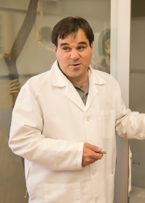
Empowering students to develop research skills
Terence D. Capellini, Richard B Wolf Associate Professor of Human Evolutionary Biology, empowers students to grow as researchers in his Building the Human Body course through a comprehensive, course-long collaborative project that works to understand the changes in the genome that make the human skeleton unique. For instance, of the many types of projects, some focus on the genetic basis of why human beings walk on two legs. This integrative “Evo-Devo” project demands high levels of understanding of biology and genetics that students gain in the first half of class, which is then applied hands-on in the second half of class. Students work in teams of 2-3 to collect their own morphology data by measuring skeletons at the Harvard Museum of Natural History and leverage statistics to understand patterns in their data. They then collect and analyze DNA sequences from humans and other animals to identify the DNA changes that may encode morphology. Throughout this course, students go from sometimes having “limited experience in genetics and/or morphology” to conducting their own independent research. This project culminates in a team presentation and a final research paper.
-
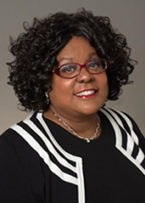
Learning from and giving back to the community through the classroom
Deborah Jewell-Sherman, Gregory R. Anrig Professor of Practice in Educational Leadership, helps students develop leadership skills and a deeper understanding of the work involved in being a systems-level leader. In her two-term course, The Workplace Lab for System-Level Leaders (WPL), students actively collaborate with school districts across the nation, including the local Cambridge, Lincoln and Boston public schools. Jewell-Sherman intentionally scaffolds the course from personal introspection to undertaking significant problems of practice for sitting superintendents and CEO’s of educational entities. Before students are assigned to teams that maximize diversity in leadership and communication styles, they deeply reflect to identify their core values. “In terms of practice,” she notes, “it’s important to know who you are and for what you stand.” Groups collaborate on simulations and analyze case studies based on real-world problems while leveraging recent research. Later, students work directly with community partners and present recommendations in a “New Haven” run before hosting an on-campus final “Broadway” run to a full audience. In January, Jewell-Sherman typically takes students on a four-day trip to a school district or educational entity in another state to collaborate on new projects.
-

Using the classroom to challenge the boundaries of a discipline
Sawako Kaijima, Assistant Professor of Architecture and Shutzer Assistant Professor at the Radcliffe Institute, challenges students’ preconceptions towards material often defined by their disciplinary norms though the use of visual programing to foster an “intuitive understanding of structural engineering in architectural design.” Structural design and architectural design often live separately in teaching and practice but are fundamentally linked. So her Interface Design: Integrating Material Perceptions course seeks to fuse these two disciplines. The use of a software tool developed specifically for this course, which is accessible even to students with no programming experience, “defamiliarizes architecture students from the common way of looking at materials” and introduces them to an engineering perspective right from the start.
-
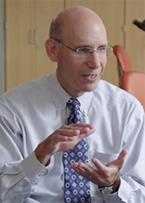
Bridging practice and theory in the professional classroom
Dr. Richard Schwartzstein, Ellen and Melvin Gordon Professor of Medicine and Medical Education, is revolutionizing textbook-dependent classrooms by incorporating real-life applications. In this case, first-year Harvard Medical School students apply their reading through case simulations. A robot functions as the patient, and a small group of students take on various roles to work together and treat the patient. Students are supported by a facilitator, who offers guiding questions but no direct answers, as well as the rest of the class, who serve as consultants or in other supporting roles in the case, like the patient’s family. “Instead of a paper case, now it feels much more real. And suddenly, they’re immersed in taking care of a patient,” Dr. Schwartzstein reflects. After a simulation ends, the whole class debriefs the case, including what students struggled with and how they felt during the exercise.

